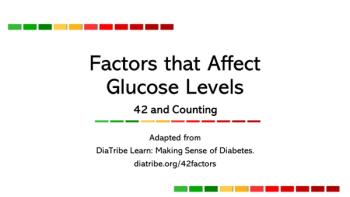
Drug-Eluting Stents: What Is the Real Risk?
GAITHERSBURG, Md. -- The issues surrounding drug-eluting coronary stents remain white hot. The core question is whether they will emerge, in the end, as a great boon to coronary patients or as a lethal insult of major magnitude.
GAITHERSBURG, Md., Jan. 11 -- The issues surrounding the safety of drug-eluting coronary stents remain white hot, with extremes views on the future of the little mesh devices.
The core question is whether drug-eluting stents will emerge, in the end, as a great boon to coronary-disease patients or as an out-of-control lethal insult of major magnitude.
The two approved devices, Cypher (sirolimus-eluting) and Taxus (paclitaxel-eluting), dodged several bullets late last year when an FDA advisory safety panel agreed that the stents are safe when used according to label directions Yet that use represents a minority of the millions of drug-eluting stents implanted in Americans.
That same panel, which met here in special session in December, said that safety-especially late thrombosis-was a concern when the stents are used off-label, the indication for an estimated 60% of the six-million drug-eluting stents implanted worldwide.
And even with those recommendations, there are number of lingering questions that were not answered by the FDA panel.
Among the issues left hanging are these:
- Both Cypher and Taxus stents appear to carry a risk of late thrombosis, but in clinical trials this excess was not associated with an increased risk of death or myocardial infarction, a disconnect that has not been adequately explained.
- Data from large European registries suggest a significant and cumulative increased risk of MI and death, a disconnect this time with U.S. registry data that suggest a much lower risk.
- The mechanism of stent thrombosis has yet to be explained, although a number of possibilities have emerged in recent months.
- Dual antiplatelet therapy with Plavix (clopidogrel) and aspirin appears to reduce the risk of stent thrombosis, but the optimum duration of therapy-12 months, 24 months, indefinite-is up in the air.
- What comes next? Are the data, which are just emerging three-years after Cypher became the first FDA-approved drug-eluting stent, a foreshadowing of future, and perhaps greater, risk?
The American Heart Association, meanwhile, has been working with a number of other cardiology organizations-plus disparate groups such as the American Dental Association and the American College of Physicians-to draft a statement on dual antiplatelet therapy and drug-eluting stents. That may come as soon as next week.
Late, Late Thrombosis
Before the advent of drug-eluting stents, device thrombosis was an early event-occurring within 30 days of stent placement at a rate of about 0.9%. When it occurred the result was usually myocardial infarction or death (69.8% event rate and 20.8% mortality (Cutlip et al, Circulation 2001; 103:1967-1971).
In the bare-metal stent era, late thrombosis was defined as an event occurring more than 30 days after implant and it, too, was both rare and dangerous. In one study the occurrence rate was only 0.65%, but 17% of those patients died and events included stroke and surgical revascularization (Heller et al Catheter Cardiovasc Interv. 2001; 53: 23-28).
By contrast, late thrombosis with drug-eluting stents was more likely to appear at nine to 12 months after stent implant, which led some interventionalists to refer to it as "late, late thrombosis."
And registry data, while often reporting widely varying rates of thrombosis, were fairly uniform in linking thrombosis, early, late, or late, late, with either MI or death. For example, in one registry the fatality rate for patients with late stent thrombosis was 45% (Iakovou et al, JAMA 2005; 293:2126-2130) and it was 25% in another (Ong et al J Am Coll Cardiol 2005;45:2088-92).
Thrombosis Yes, Death/MI No
But Cordis, the Johnson & Johnson company that makes Cypher, and Boston Scientific, the maker of Taxus, both continue to assert that the so-called late, late thrombosis is a rare event and in any case it is not associated with increased MI or death.
In an exhaustive, rapid-fire presentation to the FDA safety panel meeting, Donald S. Baim, M.D, executive vice president and chief medical and scientific office at Boston Scientific, backed that with four years of cumulative data from the 2,797 patients enrolled in the Taxus randomized controlled trials (Taxus I-V). They revealed that the stent thrombosis rate was not statistically different between Taxus and its bare metal comparator--1.3% for Taxus versus 0.8% for bare metal stents (P=0.057).
Likewise, the four-year mortality was 7.4% for Taxus versus 7.1% for controls (P=0.78), and the cardiac death rate was 3.1% versus 2.7% (P=0.64), Dr. Baim said.
Campbell Rogers, M.D., who is chief technology officer at Cordis, said the thrombosis rate for the Cypher stent after up to four years was 3.5%, versus 3.4% for the bare-metal comparator in its randomized trial series that included SIRIUS, E-SIRIUS, C-SIRUS, and RAVEL. Those trials included 832 Cypher patients and 825 patients who received bare-metal stents.
Meta-Analyses Tell Different Story
But a meta-analysis of the published data from those same trials reached a much different conclusion.
Edoardo Camenzind, M.D., an associate professor of cardiology at the University of Geneva in Switzerland, said that the rate of death or Q-wave MI was 2.0% for bare-metal stents at two years, versus 3.7% for the Cypher stent (P=0.09), and at three years the rate in bare metal stents was 4.0% versus 6.0% in Cypher (P=0.06).
The Camenzind data were initially reported at the European Society of Cardiology meeting in Barcelona last September. At that same meeting, a second meta-analysis found that non-cardiac mortality was significantly higher in patients treated with the Cypher stent versus the bare metal stent group.
Critics of those meta-analyses have contended that they were flawed because they relied on published data versus patient-level data from the original study databases.
The presentations made by Drs. Baim and Rogers were based on patient-level data.
Troubling Disconnect
Still, it was difficult to reconcile the disconnect between stent thrombosis and events, a point that was particularly vexing for panel member Eric Topol, M.D., of Scripps Health in San Diego, who said the disconnect was important because it suggested that the acknowledge increased risk of thrombosis was not clinically significant, a suggestion he found hard to accept.
Andrew Farb, M.D., one of several FDA staff experts who prepared briefing materials for the panel, said it may be that the numbers-meaning the numbers available from the randomized clinical trial data-were too small to show a difference, suggesting that the clinical trials required for FDA approval were not large enough to detect a mortality difference.
Regardless of the nagging questions of some panel members, the patient-level data from the stent makers, all of which represent drug-eluting stent safety in patients with mild to moderate, single vessel disease, i.e. the approved indication for the drug-eluting stents, were considered persuasive by the FDA safety panel.
They overwhelmingly agreed that the benefit of the drug-eluting stents-when used as indicated on the label-outweighed any potential risk.
Real World Risk
But safety in the real world of drug-eluting stents-those that are implanted in patients with multi-vessel disease, bifurcation lesions, or patients whose disease was complicated by diabetes-was another matter.
The FDA said that more than 60% of Cypher and Taxus stents have been implanted in patients who fall outside the narrow label indications.
Adnan Kastrati, M.D., of Deutsches Herzzentrum in Munich, Germany, said his analysis of data from randomized trials comparing Cypher with Taxus, or comparing drug-eluting stents with bare mental stents, found that diabetes was an adverse prognostic factor regardless of stent type.
The e-Cypher U.S. registry contains data from 2,067 patients, although the data were only collected for 12 months. Nonetheless, at 12 months there were higher rates of major cardiac events and stent thrombosis among patients with bifurcation lesions, multiple stents, and chronic total occlusions. Moreover, mortality was 10.4% for patients with left main lesions.
The ARRIVE I registry enrolled 2,585 patients who received Taxus stents and characterized the patients as uncomplicated or complex. Twice as many patients were identified as complex and as with the Cypher registry, the cardiac events-including death-were more common in the complex patients.
For example, the rate of cardiac events related to stent placement was 4% among the uncomplicated patients versus 8.4% among patients in the complex group. And 2.6% of the uncomplicated patients died within 12 months of stent placement, versus 4.1% of the complex patients.
Swedish Registry Raises Concerns
Perhaps the most damning "real world" evidence comes from European registries, especially data from a Swedish registry, which were presented to the FDA panel and are expected to be published early this year.
That registry, the SCAAR UCR Sweden registry, contains data on every stent-drug-eluting and bare-metal-implanted in Sweden as well as complete follow-up data on 100% of the 12,023 patients who received drug-eluting stents and the 19,269 patients who received drug-eluting stents from 2003 through 2005.
After six months, there was a 20% relative rise in combined endpoint of death/MI in the drug-eluting stent group, which corresponded to a yearly absolute increase in risk of 0.5-1%, said Bo Lagerqvist, M.D., and Lars Wallentin, M.D., from the Uppsala Clinical Research Center.
There was also a 32% relative increase in mortality, which corresponded to a yearly absolute increased risk of about 0.5% and a 12% increase in relative risk of MI, which represented a yearly absolute risk of 0.3-0.5%.
These risks remained unchanged from six months to three years, Dr. Wallentin said.
At the same time, the rate of restenosis was halved in the drug-eluting stent group, but because the restenosis rate was low to begin with that represented an absolute reduction of only about 3%.
While the Swedish data have not yet been published in a peer-reviewed journal, they were widely reported in Swedish media. As result, Dr. Wallentin said, drug-eluting stent use has dropped dramatically at the 26 interventional cardiology centers in Sweden.
In the U.S., drug-eluting stents are still the device of choice among most interventional cardiologists, but there was a decline in their use over the last six months of 2006. For example, in its fourth quarter report, Boston Scientific reported its market penetration for Taxus had dropped to less than 75% by year's end, down from about 83% when the drug-eluting stent data were reported in Barcelona.
Next: How does stent thrombosis occur and how can it be prevented?
Newsletter
Enhance your clinical practice with the Patient Care newsletter, offering the latest evidence-based guidelines, diagnostic insights, and treatment strategies for primary care physicians.

































































































































































































































































































